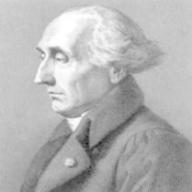物質的密度會隨速度改變嗎?
2013-09-06 6:41 am
Does the density of an object really change with its speed? (according to the special relativity)
回答 (1)
2013-09-06 8:11 am
✔ 最佳答案
YES.Since according to special relativity, the mass m of an object is given by
m = (mo)r
where mo is the rest mass
r = 1/square-root(1-v^2/c^2) with v and c are the speeds of the object and light respectively.
Because "length contraction" also occurs, which is given by
L = (Lo)/r
where L and Lo are the lengths at speed v and at rest respectively
Hence, density p is given by
p = m/(A.L) where A is the cross-sectional area of the object
i.e. p = (mo)r/[Lo/r] = (mo/Lo).r^2 = (po)/(1-v^2/c^2)
where po is the density of the object at rest
Therefore, the density of the object increases with speed.
收錄日期: 2021-04-21 22:39:01
原文連結 [永久失效]:
https://hk.answers.yahoo.com/question/index?qid=20130905000051KK00282

